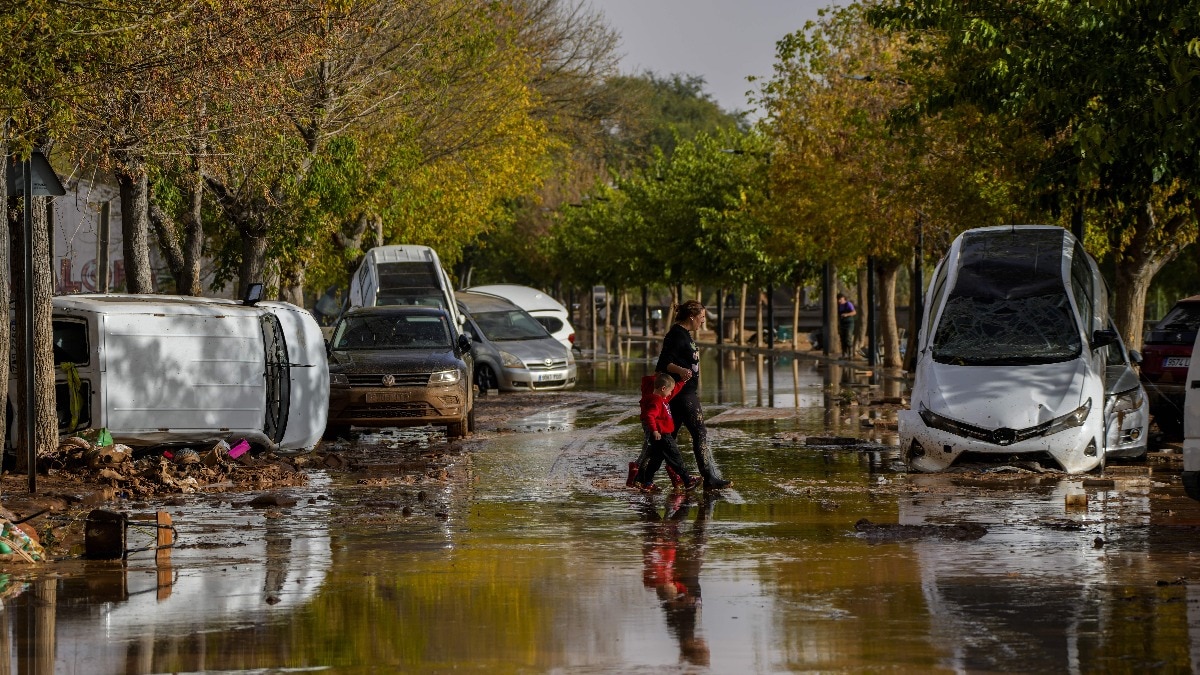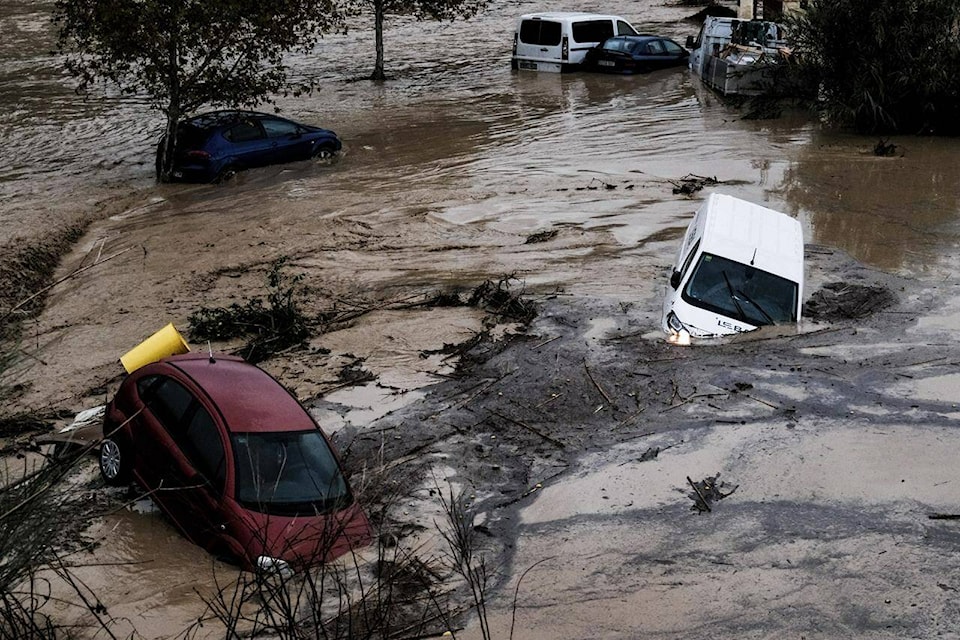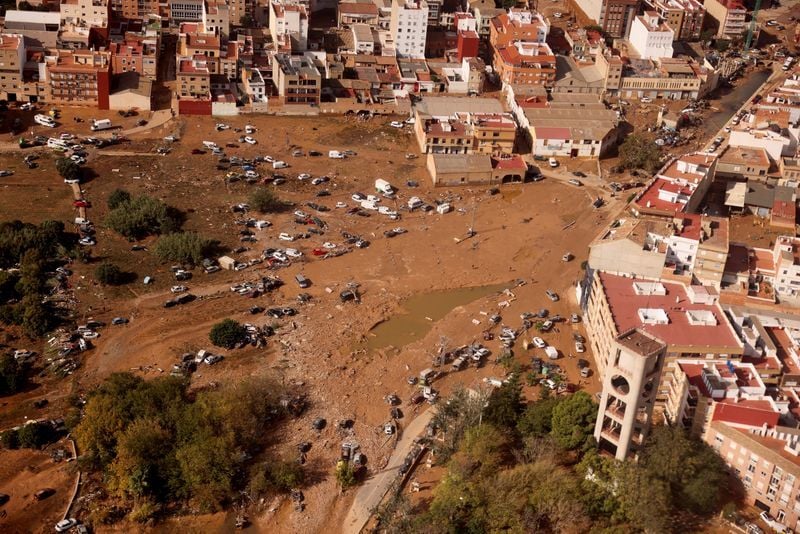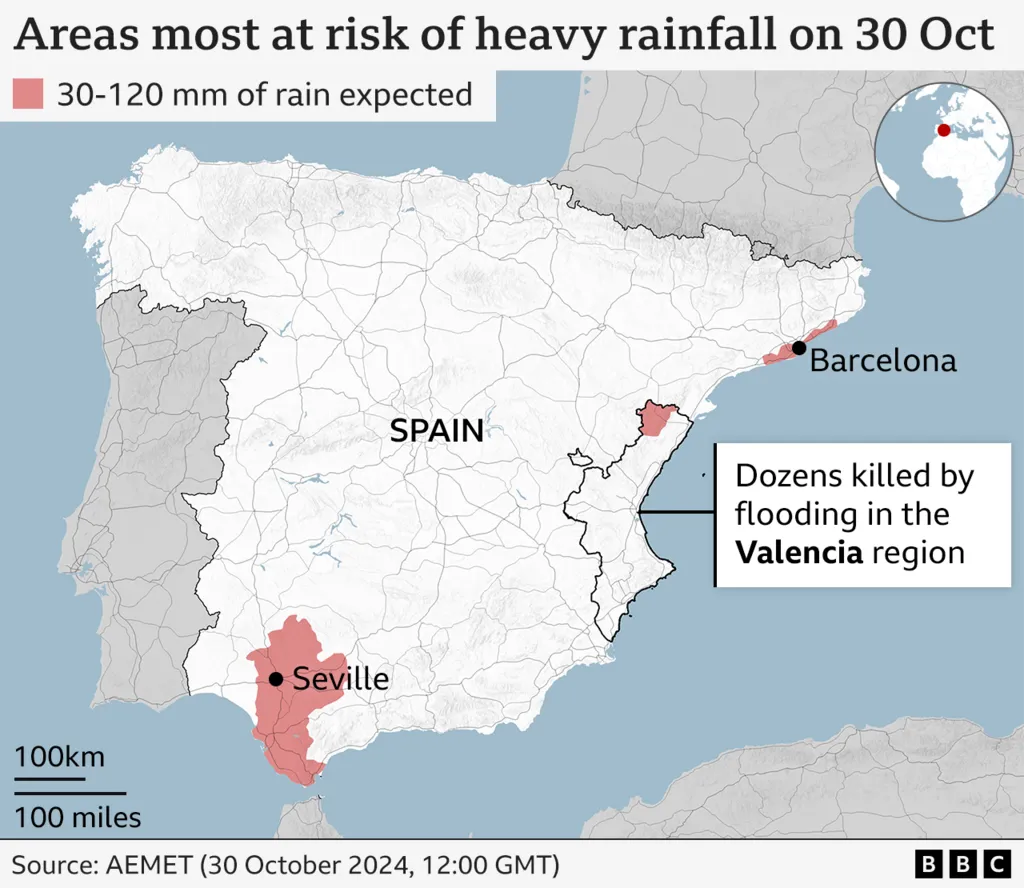
Record-Breaking Flooding Takes Over 200 Lives Across Spain’s Eastern Coast
Spain is grappling with one of its worst natural disasters in recent history as flash floods ravage eastern regions, including Valencia, Castilla-La Mancha, and Andalusia. According to the latest reports, over 205 people have lost their lives, with many more still unaccounted for. Torrential rain caused by a severe weather phenomenon, known locally as “La Gota Fría” or DANA (isolated depression at high altitudes), has dumped unprecedented amounts of water in mere hours. Cities and towns along the eastern coast have suffered heavily, with entire neighborhoods submerged and infrastructure collapsing under the force of the floodwaters.

Understanding the Science: What Caused This Catastrophic Flood?
The devastation is attributed to DANA, a Mediterranean weather event where cold air from northern Europe meets warmer, humid air from the Mediterranean. This interaction creates a pressure system that leads to thunderstorms and heavy rain. This fall’s DANA brought levels of rainfall well beyond historical averages. For instance, Valencia received over 400 mm (15.7 inches) of rain within 24 hours—over a year’s worth of rainfall in just one day. These record-breaking downpours overwhelmed flood defenses and exposed vulnerabilities in local infrastructure.
Climate Change’s Role in the Growing Severity of DANA
The Spanish Meteorological Agency has linked the increasing intensity of DANA events to climate change. Warmer sea temperatures and unpredictable weather patterns may be contributing to stronger storms, as warmer air holds more moisture, which can lead to heavier rains. Experts point out that similar events have been growing in frequency and severity, raising concerns that climate change will continue to heighten the destructive power of DANA, particularly in the vulnerable Mediterranean region.

A Struggle to Respond: How Unpreparedness Added to the Tragedy
While Spain is no stranger to flash floods, the severity and scale of this event took emergency services by surprise. As flood defenses quickly collapsed, Valencia saw cars swept away, bridges destroyed, and residents trapped in flooded homes. Emergency crews worked around the clock, but ongoing rainfall and blocked roads hampered rescue efforts. In some areas, communications infrastructure was destroyed, adding to the difficulty in reaching those in need. Authorities report that hundreds of people remain displaced, and ongoing rain poses continued risks to communities struggling to recover.
Government Action and International Assistance
Prime Minister Pedro Sánchez declared three days of national mourning and has coordinated extensive relief efforts. He addressed the nation with a message of solidarity, emphasizing the need to support grieving families and those still missing loved ones. Neighboring countries, including Germany and Portugal, have also pledged support, offering resources and aid to Spanish authorities. According to regional officials, Valencia has been hardest hit, with nearly 2,000 emergency personnel deployed to assist in evacuation and relief operations.
Statistics Highlight the Impact
- Death toll: Over 205 people have been confirmed dead, with many still unaccounted for.
- Rainfall: Valencia recorded over 400 mm (15.7 inches) of rain in just one day, an unprecedented amount that overwhelmed the region’s flood control systems.
- Affected regions: More than 50,000 homes have been damaged across Valencia, Castilla-La Mancha, and Andalusia, with many areas left without electricity.
- Displacement: Thousands of residents have been evacuated, and emergency shelters have been set up to accommodate those displaced.
Calls for Improved Flood Management and Infrastructure
This tragedy has spurred urgent calls for Spain to enhance its flood management strategies and infrastructure resilience. The sheer speed of the flooding caught many off-guard, underscoring the need for robust early warning systems and fortified flood defenses. Experts suggest Spain should consider updating building codes, implementing more resilient drainage systems, and enhancing community awareness about flood risks.

A Somber Lesson and a Call to Action
As rescue operations continue, Spain is left to reflect on this tragic event and how to prevent such a disaster in the future. In addition to immediate relief efforts, officials are expected to begin an extensive review of flood preparedness strategies to safeguard communities in the future. This year’s DANA has highlighted the critical need for proactive climate adaptation measures, as climate change may continue to bring more extreme weather to vulnerable regions worldwide.














